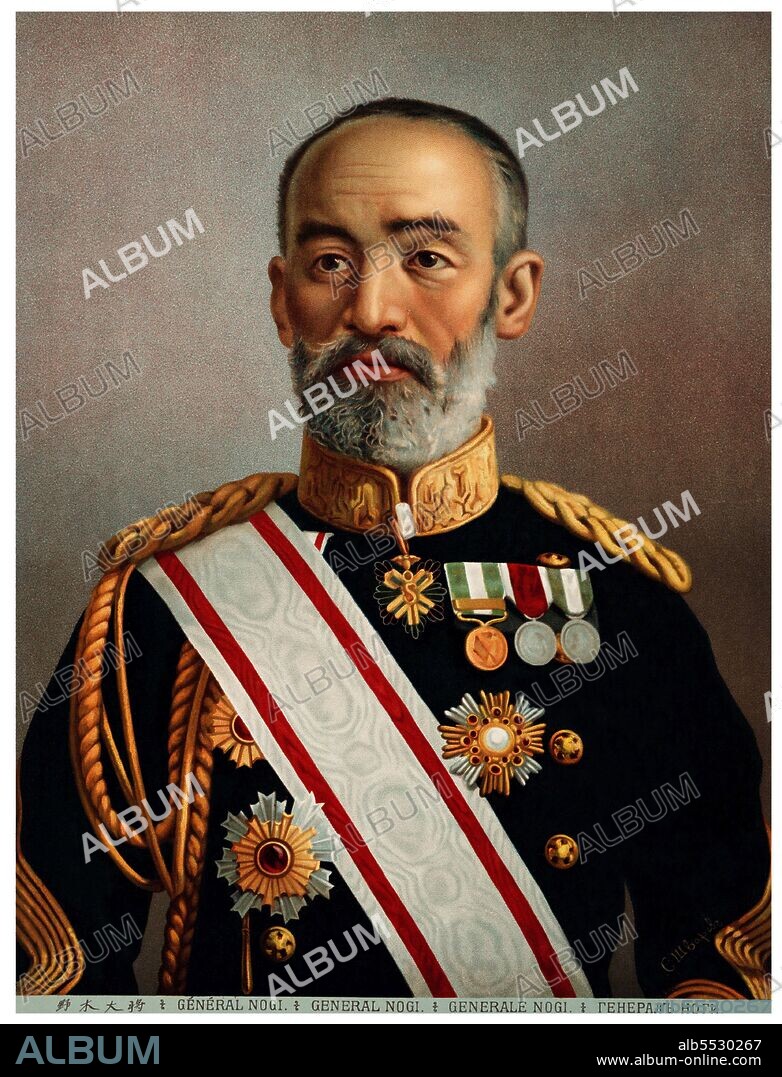alb5530267
Japan: Count Maresuke Nogi, general in the Imperial Japanese Army (1849-1912)

|
Ajouter à une autre Lightbox |
|
Ajouter à une autre Lightbox |



Avez-vous déjà un compte? S'identifier
Vous n'avez pas de compte ? S'inscrire
Acheter cette image

Titre:
Japan: Count Maresuke Nogi, general in the Imperial Japanese Army (1849-1912)
Légende:
Voir la traduction automatique
Count Nogi Maresuke, GCB (?? ??), also known as Kiten. Count Nogi, (25 December 1849–13 September 1912) was a general in the Imperial Japanese Army and a governor of Taiwan. He was one of the commanders during the 1894 capture of Port Arthur from China, and the subsequent massacre of thousands of Chinese civilians. He was a prominent figure in the Russo-Japanese War of 1904-5, as commander of the forces which captured Port Arthur from the Russians. He was a national hero in Imperial Japan as a model of feudal loyalty and self-sacrifice, ultimately to the point of suicide. In the Satsuma Rebellion, he lost a banner of the emperor in battle, for which he tried to atone with suicidal bravery in order to recapture it, until ordered to stop. In the Russo-Japanese War, he captured Port Arthur but he felt that he had lost too many of his soldiers, so requested permission to commit suicide, which the emperor refused. These two events, as well as his desire not to outlive his master (junshi), motivated his suicide on the day of the funeral of the Emperor Meiji. His example revitalized the Japanese tradition of ritual suicide.
Crédit:
Album / Pictures From History/Universal Images Group
Autorisations:
Modèle: Non - Propriété: Non
Questions sur les droits?
Questions sur les droits?
Taille de l'image:
3700 x 4845 px | 51.3 MB
Taille d'impression:
31.3 x 41.0 cm | 12.3 x 16.1 in (300 dpi)
Mots clés:
ARMEE • ARMEE: SOLDATS • ARMÉEE • ARMÉES • ASIE • ASIE, CONTINENT • COLONIALISME • CONTINENT ASIE • GÉNÉRAL CONFÉDÉRÉ • GENERAL • GÉNÉRAUX • GNERAL • GUERRE RUSSO-JAPONAISE • HISOIRE • HISTOIRE • IMPERIALISME • JAPON • JAPONAIS • JAPONAISE • MILITAIRE • MORT SUICIDE • ORNEMENT, JAPONAIS • SOLDAT DE L'ARMEE POPULAIRE NATIONALE • SOLDAT • SUICIDE • SUICIDES • TAIWAN • VIE MILITAIRE ET ARMEMENT
 Pinterest
Pinterest Twitter
Twitter Facebook
Facebook Copier le lien
Copier le lien Email
Email
